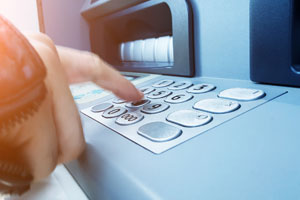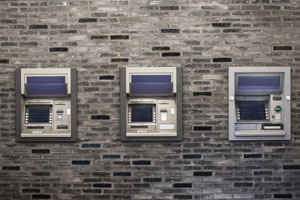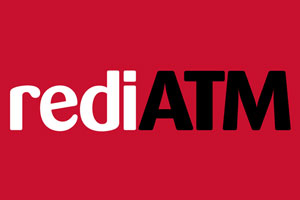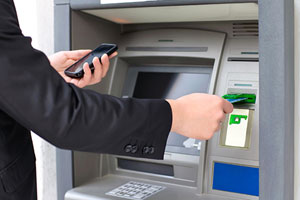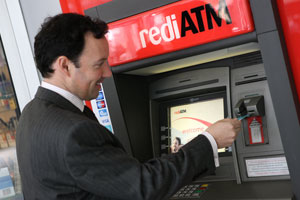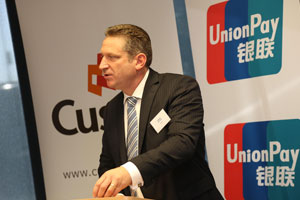
Sydney, Wednesday 18 June 2014: On his first trip to Australia, China UnionPay’s President Shi Wenchao was formally welcomed by Cuscal’s Managing Director Craig Kennedy where they officially launched a joint ATM access partnership at a ceremony at the company’s Sydney headquarters attended by His Excellency Huaxin Li, General Consul, Consulate-General of the People’s Republic of China in Sydney.
Established in 2002, UnionPay has become a central and pivotal part of China’s bankcard industry with over 4 billion cards on issue and the agreement with Cuscal provides UnionPay’s cardholders with immediate access to the rediATM network across Australia.
Managing Director of Cuscal, Craig Kennedy said:
“Our tourism industry is a significant contributor to the national economy employing over half a million Australians and there is no doubt China and the growing Chinese tourism market is integral to Australia’s future economy.
Investment and innovation are key to that growth continuing and ensuring Australia’s financial system infrastructure is robust, secure and able to meet the needs of these visitors while they here is a top priority.
The Cuscal business model is centered on stimulating competition within Australia’s banking sector and promoting new and innovative forms of payments with cost-effective transactional banking services for its partners.
Cuscal is delighted to welcome President Shi Wenchao on his first visit to Australia and excited to partner with UnionPay – the rediATM network is configured and live, ready to accept UnionPay cardholders and we welcome them to our network.”
According to Tourism Research Australia data released in April 2014, China now accounts for 20 percent of all first time holiday visitors to Australia1 and remains Australia’s top trip expenditure market increasing 16 percent to $4.8 billion during 2013. Chinese visitors to Australia1 are the most valuable inbound tourism market with 700,000 visiting per year spending an average AUD$7,000 per visit, and the forecast is that number will exceed one million tourists who will collectively contribute $10 billion2 to the Australian economy by 2018.
The number of Chinese holiday visitors2 coming to Australia for the first time increased by 27 percent across 2013 underpinning an increase in accommodation nights of 22 percent and a 32 percent increase in trip expenditure up to $1.5 billion.
As the largest card issuer in the world, UnionPay has a unique understanding of where their customers are going, what they are spending their money on and how they want to transact and pay for their purchases. President Shi Wenchao revealed research from across 2013 showed Chinese shoppers now contribute 24% of tax free shopping on a global basis and account for almost a quarter of all transactions worldwide while the average UnionPay transaction in Australia was AU$800.
“We know our cardholders are travelling to Australia for business, leisure or study and are only allowed to carry a maximum US$5,000 cash on each trip so their UnionPay card is a critical payment alternative. The success of our business model is built around issuing cards and securing a global footprint of acceptance for those cards and to that end, it is our aim that 80 percent of merchants and 90 percent of ATMs in Australia will be accepting UnionPay cards within the next 18 to 24 months. Extending the footprint where our cardholders are accepted both with merchants and ATM’s is key to our continuing growth and Cuscal was a natural partner of choice for UnionPay with the size and reach of their rediATM network across Australia. The agreement we are announcing with Cuscal today is a positive step forward that ensures we can deliver our cardholders immediate access to one of the most reliable, robust and secure cards and payments networks while they are here,” he said.
Under the new partnership between Cuscal and UnionPay, cardholders visiting Australia will now be able to draw cash from 1,200 of the distinctive red Cuscal-driven rediATMs in addition to those operated by National Australia Bank. President Shi performed the first UnionPay card transaction at Cuscal’s onsite rediATM. The UnionPay partnership and access to rediATM will be promoted via a gradual roll-out of UnionPay logo decals on the ATMs, as well as on-screen promotions, UnionPay’s website and inbound tourism brochures.
About UnionPay International
UnionPay International, a subsidiary of China UnionPay engaging in international business, is committed to attracting global partners with its membership system, expanding the UnionPay card acceptance network, increasing the issuance and use of UnionPay card, promoting the cross-border application of innovative payment and enhancing the international influence of the UnionPay brand.
At present, through its cooperation with over 300 institutions across the globe, UnionPay International has extended its card acceptance network to more than 140 countries and regions, and UnionPay cards have been issued in more than 30 countries and regions. UnionPay International is providing excellent, efficient and secure cross-border payment service to the largest group of cardholders in the world and increasingly convenient localized service to more and more overseas UnionPay cardholders.
For more information on UnionPay International, please visit: www.UnionPayintl.com.
About rediATM
The rediATM network is one of Australia’s largest ATM networks, with over 3,000 rediATMS across Australia and partnered with over 100 financial institutions including credit unions, building societies and banks.
The rediATM network provides direct charge free access to over 8 million Australian cardholders’.
For further information on the rediATM network please visit www.rediatm.com.au
1 http://www.tra.gov.au/publications/latest-ivs-report.html
2 http://www.abc.net.au/news/2013-06-04/china-tourism-boom/4732668


